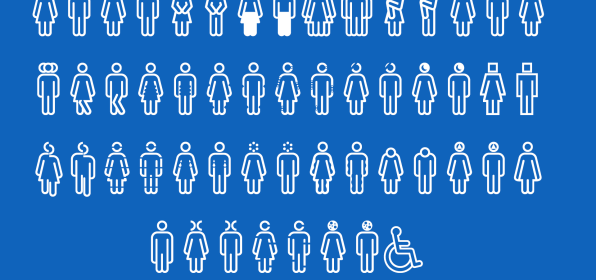the invisible disability

MEDHINI RAMESH – People with diagnosed disabilities have massive struggles, a fact we are all well aware of. They have to find a way to manage their disability, still “fit” into a society that is sometimes not willing to accept them, and to experience the moments that make life beautiful… which is essentially what we are all doing. However, it’s hard to imagine the experience of someone without a detectable illness. We all know someone who wishes to keep their personal struggles private. Either way, these people still face the same struggles that people with a visible disability face but internally and the surrounding public may never know about their daily challenges.
We often tell ourselves that we would be the nice ones; we wouldn’t be the kids making fun of someone with a disability. Yet, many people fail to consider that some mental or physical disabilities, such as fibromyalgia, chronic pain, and ADHD, are not recognizable with the naked eye . As a result, many may fail to recognize that behaviors perceived as unusual are attributed to such invisible conditions, choosing judgment rather than kindness and understanding
As long as people are able to see that the person has a disability, they are treated with respect (usually). However, what if it’s not severe? What if it’s not visible? What if they are able to be fully functioning people who simply have trouble socially ? Do they still get some leeway or concession?
It’s not just physical disabilities that are treated in this way. Mental health in general is only regarded as real if it’s severe enough. Most universities, including UGA, have immediate counsel for those who are considering suicide (which is completely necessary). However, if someone is facing mild to moderate depression, their condition is often not seen as a priority, and appointments for counsel are only available weeks later. Prioritizing may be essential for smaller, or less funded universities, but large ones that make huge profits should consider expanding their mental health and counseling programs. The demand for mental health resources has increased tremendously in the past decade, but it has not been matched with an equal increase in professionals to alleviate the struggles of those dealing with these issues. This means less effective solutions and overworked counselors/psychologists/therapists. The only real solution is to increase funding, which allows for an increase in staff. While prioritizing emergency cases makes sense, it would reflect better on universities if they were better equipped to handle less severe cases of mental illness that could actually prevent life-threatening incidents like suicide and self-harm in the long run. Thankfully, UGA has an amazing CAPS program which has multiple types of sessions including: Individual and Couples’ Counseling, Single Session Therapy, Group Counseling, Psychiatric Services, Crisis Intervention, Transition of Care to Community Resources, Well-Being and Prevention Programs, Workshops, and Consultation Services. In addition, it has an extensive and growing staff to support supports the ever-growing in student population. Appointments are easy to schedule and accessible, so students have multiple options, most of which are free of cost.
As future physicians, it’s good to be reminded that not all disabilities are visible, and mental and physical disabilities lie on a spectrum. Like all other illnesses, these issues present in various ways in different people. It is important to be cognizant of the fact that people may suffer privately. Before critiquing someone else’s behaviors, it is important to take time to understand their unique perspective and situation. People with these conditions deserve respect and empathy, just as everyone else does. While such a notion may seem obvious, even those who advocate for greater inclusion of physical and mental disabilities may impart judgment on people with these conditions. In essence, while the narrative surrounding physical and mental disabilities has become more nuanced, there is still a long way to go in ensuring that all people are treated with kindness, respect, and understanding.
Copy Editor – Uditi Srivastava
Photography Source – https://www.fastcompany.com/90216071/does-the-universal-symbol-for-disability-need-a-redesign
